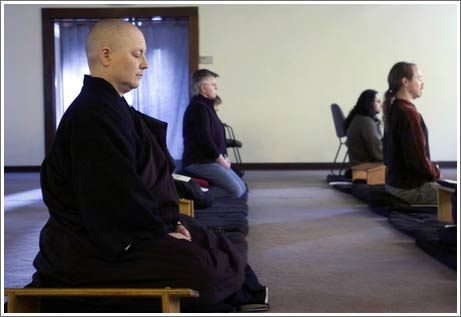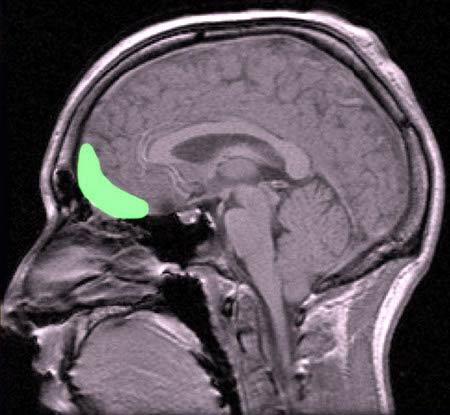Meditation can increase gray matter
People have a lot of strategies to create big muscles and healthy skeletons. But how to create a big brain? A group of researchers from the University of California - Los Angeles (UCLA) used high-resolution magnetic resonance imaging (MRI) to capture the brains of people who meditate.
In the study published in the Journal of NeuroImage , the researchers said that there are certain areas in the brains of those who meditate more often than similar control groups.

Meditators also reduce stress levels and protect immune systems.(Photo: Internet)
In particular, those who meditate, the hippocampus (also called the walrus) have a much larger volume than the regions of OFC cortex, the hippocampus and the temporal regression - all of these Emotional control .
People with consistent thoughts often have a special ability to maintain positive emotions, maintain a stable state of emotion, and take mindful behavior. Eileen Luders, the lead author of the report and a postdoctoral fellow at UCLA's Neuro Photo Laboratory, said the observed differences due to brain surgery tell why people or meditations have possibilities. This special feature.
Research has confirmed the beneficial aspects of meditation. In addition to better focus and better emotional control, meditators reduce stress levels and protect immune systems. But we know little about the relationship between meditation and the structure of the brain.
Luders' team examined 44 people from 22 control subjects and 22 participants in different forms of meditation, including Zazen meditation, pure meditation (Samatha) and Vipassana meditation and meditation forms. other for a period of 5-46 years, an average of 24 years. More than half of meditators believe that high concentration is a major part of meditation, most of them meditate for 10-90 minutes a day.

People who meditate, the hippocampus region have a much larger volume than those in the cortex, the hippocampus and the temporal zone.(Photo: pathfinderscareerdesign)
The researchers used three-dimensional high-resolution magnetic resonance imaging and two different approaches to determine differences in brain structure. The first approach automatically separates the brain into different areas of interest and researchers will measure the size of the brain structures. The second approach divides the brain into two different types of cells, thereby measuring the amount of gray matter in specific areas of the brain.
They found that the brain size was much larger than the brain of those in the control group, such as larger right hippocampal volume and gray matter in OFC cortex, right hippocampus and temporal lobe. positive left increases. For the control group, no area in the brain had more gray matter than the meditator group.
Because the regions of the brain are closely related to emotions, these findings can form the basis of neurology that makes meditators able to specifically regulate their emotions and respond. good control.
The author said that what still needs to be studied is the correlations that are particularly microscopic - that is, whether the number of neurons increases or not, the larger the size of the neurons. certain ' links ' forms that meditators can develop and ordinary people do not.
- Brain gray matter reflects the political tendency
- Sad memories change the amount of gray matter in the brain
- Cocaine wreaks havoc on the brain
- Takigyo - Meditating under a waterfall
- Watching porn movies damaging the brain?
- Gray matter of the world
- The astronaut's brain changes during long journeys
- New benefits of meditation
- Meditation is beneficial for heart patients
- A 15-minute meditation session works equally well with a mental health vacation
- The role of varieties in production
- Dance of healing healing of Turks
 Green tea cleans teeth better than mouthwash?
Green tea cleans teeth better than mouthwash? Death kiss: This is why you should not let anyone kiss your baby's lips
Death kiss: This is why you should not let anyone kiss your baby's lips What is salmonellosis?
What is salmonellosis? Caution should be exercised when using aloe vera through eating and drinking
Caution should be exercised when using aloe vera through eating and drinking